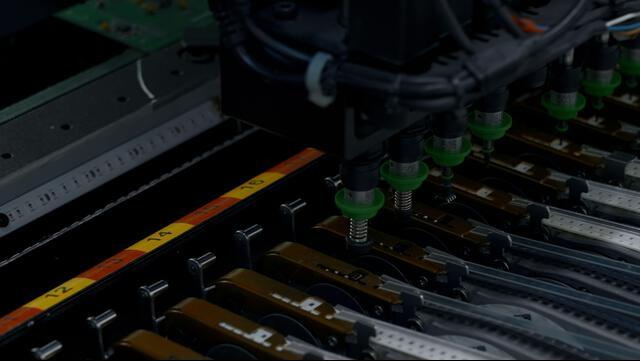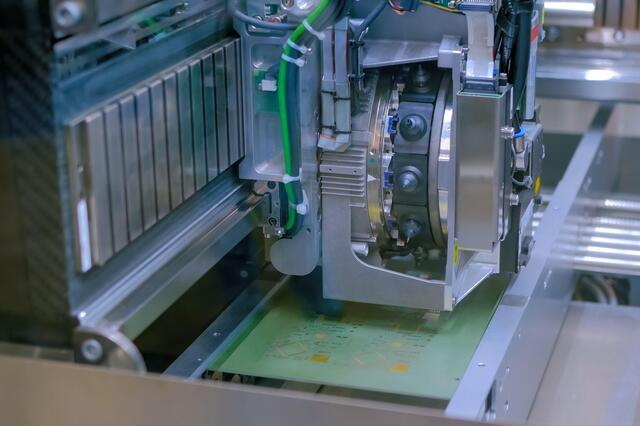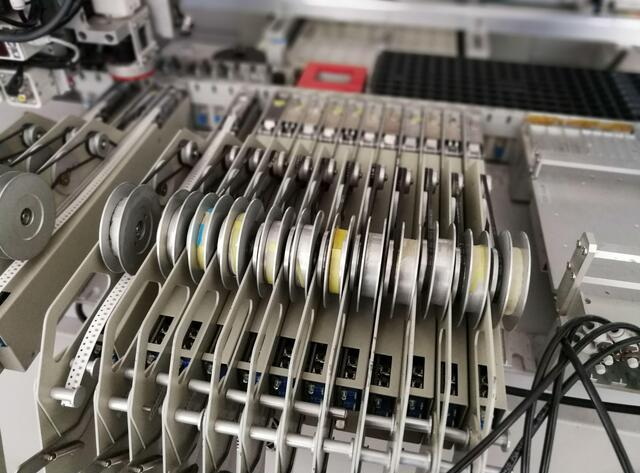Content Menu
● Introduction to DIY SMD Pick and Place Machines
>> Advantages of DIY Machines
>> Common Challenges
● Troubleshooting Common Issues
>> Mechanical Setup Issues
>> Software Integration Issues
>> Component Handling Issues
● Advanced Troubleshooting Techniques
● Best Practices for Maintenance and Upgrades
● Conclusion
● FAQs
>> 1. How Do I Prevent Component Damage During Placement?
>> 2. What Are Common Causes of Inaccurate Component Placement?
>> 3. How Do I Troubleshoot Issues with My Machine's Vision System?
>> 4. What Are the Benefits of Using a DIY SMD Pick and Place Machine?
>> 5. How Often Should I Perform Maintenance on My DIY SMD Pick and Place Machine?
Troubleshooting issues with a DIY SMD pick and place machine can be challenging due to the complexity of the equipment and the precision required in surface mount technology (SMT). However, with a systematic approach and understanding of common problems, you can effectively identify and resolve issues, ensuring your machine operates efficiently and accurately. This article will guide you through the process of troubleshooting common problems with your DIY SMD pick and place machine, focusing on key areas such as mechanical setup, software integration, and component handling.

Introduction to DIY SMD Pick and Place Machines
DIY SMD pick and place machines are designed to automate the process of placing surface mount devices (SMDs) onto printed circuit boards (PCBs). These machines are particularly useful for hobbyists and small-scale manufacturers who need to assemble PCBs without the high cost of commercial machines. However, building and maintaining such a machine requires careful attention to detail and troubleshooting skills.
Advantages of DIY Machines
1. Cost-Effectiveness: Building your own machine can significantly reduce costs compared to purchasing a commercial one. This is especially beneficial for small projects or prototyping where budget constraints are a major concern.
2. Customization: You can tailor the machine to your specific needs, such as handling unique component sizes or types. This flexibility allows for the assembly of specialized PCBs that might not be feasible with standard commercial machines.
3. Learning Experience: The process of building and troubleshooting a DIY machine provides valuable insights into SMT technology. It helps develop skills in electronics, mechanics, and software programming, which are essential for advanced projects.
Common Challenges
1. Mechanical Precision: Ensuring that the machine's mechanical components are precise and reliable. This includes maintaining accurate movement along the X-Y-Z axes and ensuring that nozzles are properly aligned.
2. Software Integration: Developing or integrating software that accurately controls the machine's movements. This involves writing or using existing code to manage the placement process, including calibration and component recognition.
3. Component Handling: Managing the delicate process of picking and placing SMD components without damage. This requires precise control over vacuum pressure and nozzle movement to avoid damaging components.
Troubleshooting Common Issues
Mechanical Setup Issues
Mechanical issues often arise from improper assembly or wear and tear over time. Here are some common problems and their solutions:
- Inaccurate Movement: If the machine's X-Y-Z axes are not moving accurately, check for loose connections or worn-out parts like linear bearings. Ensure that all mechanical components are securely fastened and well-maintained. Regular lubrication of moving parts can also help maintain smooth operation.
- Nozzle Problems: Sticking or damaged nozzles can cause components to be misplaced or damaged. Regularly inspect and clean nozzles, and replace them if necessary. Using high-quality nozzles designed for SMD handling can reduce these issues.
- Feeder Issues: Component feeders can sometimes jam or misfeed components. Check that feeders are properly aligned and that components are securely seated. Regular cleaning of feeders can prevent dust buildup that might cause jams.
Software Integration Issues
Software problems can lead to incorrect positioning or failure to execute commands. Here are some troubleshooting steps:
- Calibration Errors: Ensure that the machine is properly calibrated. Use calibration routines provided by the software or manually adjust settings to align with the machine's physical dimensions. Calibration should be performed after any mechanical adjustments or software updates.
- G-Code Issues: If using G-code for programming, verify that the commands are correctly formatted and executed. Use software tools to simulate and debug G-code before running it on the machine. This helps identify syntax errors or logical mistakes that could cause incorrect movements.

Component Handling Issues
Component handling issues can result in damaged components or incorrect placement. Here are some common problems and solutions:
- Component Damage: Ensure that components are handled gently and that the machine's vacuum or nozzle pressure is appropriately set. Use high-quality components that are less prone to damage. Implementing ESD protection measures can also prevent damage from static electricity.
- Incorrect Placement: Verify that the machine's fiducial recognition system is functioning correctly. Clean the camera lens and recalibrate the system if necessary. Ensure that PCBs are properly aligned and that fiducials are clearly marked.
Advanced Troubleshooting Techniques
For more complex issues, advanced troubleshooting techniques may be required:
- Vision System Calibration: If your machine includes a vision system, ensure it is properly calibrated to recognize fiducials and components accurately. This involves adjusting camera settings and software parameters to optimize image processing.
- Electrostatic Discharge (ESD) Protection: Implement ESD protection measures to prevent damage to sensitive components during handling. This includes using anti-static mats, wrist straps, and grounding equipment to dissipate static electricity.
- Thermal Management: Ensure that the machine operates within a stable temperature range. Extreme temperatures can affect mechanical performance and component reliability. Use thermal monitoring tools to maintain optimal operating conditions.
Best Practices for Maintenance and Upgrades
Regular maintenance and strategic upgrades can significantly extend the lifespan of your DIY SMD pick and place machine and improve its performance:
- Regular Cleaning: Regularly clean mechanical components and nozzles to prevent dust buildup and ensure smooth operation.
- Software Updates: Keep software up-to-date with the latest patches and features. This can improve performance, fix bugs, and add new functionalities.
- Component Upgrades: Consider upgrading components such as motors or control boards to improve precision and speed. High-quality components can enhance the machine's reliability and accuracy.
Conclusion
Troubleshooting a DIY SMD pick and place machine requires patience, attention to detail, and a systematic approach. By understanding common mechanical, software, and component handling issues, you can efficiently resolve problems and ensure your machine operates at optimal levels. Regular maintenance and calibration are key to preventing issues and maintaining the quality of PCB assemblies. As technology advances, staying informed about new techniques and tools can further enhance your DIY machine's capabilities.

FAQs
1. How Do I Prevent Component Damage During Placement?
To prevent component damage, ensure that the machine's vacuum or nozzle pressure is set correctly. Use high-quality components that are less prone to damage, and maintain proper operation of the machine to avoid overworking it.
2. What Are Common Causes of Inaccurate Component Placement?
Inaccurate placement can be caused by incorrect component calibration, damaged feeders, or inadequate machine maintenance. Regularly check and adjust these factors to ensure precise placement.
3. How Do I Troubleshoot Issues with My Machine's Vision System?
Troubleshoot vision system issues by cleaning the camera lens, recalibrating the system, and ensuring that the software is functioning correctly. Malfunctioning vision systems can lead to inaccurate fiducial recognition and component placement.
4. What Are the Benefits of Using a DIY SMD Pick and Place Machine?
The benefits include cost-effectiveness, customization to specific needs, and a valuable learning experience in SMT technology. DIY machines can be tailored to handle unique components or small batch productions efficiently.
5. How Often Should I Perform Maintenance on My DIY SMD Pick and Place Machine?
Regular maintenance should be performed weekly or monthly, depending on usage. This includes cleaning nozzles, checking mechanical components, and updating software to ensure optimal performance and prevent downtime.




















